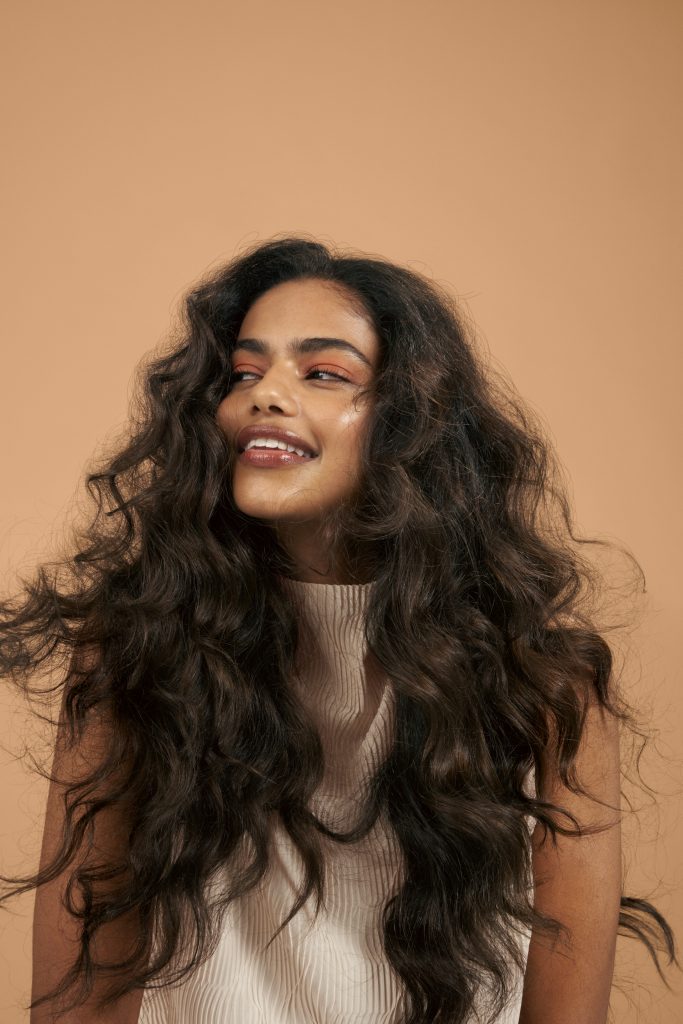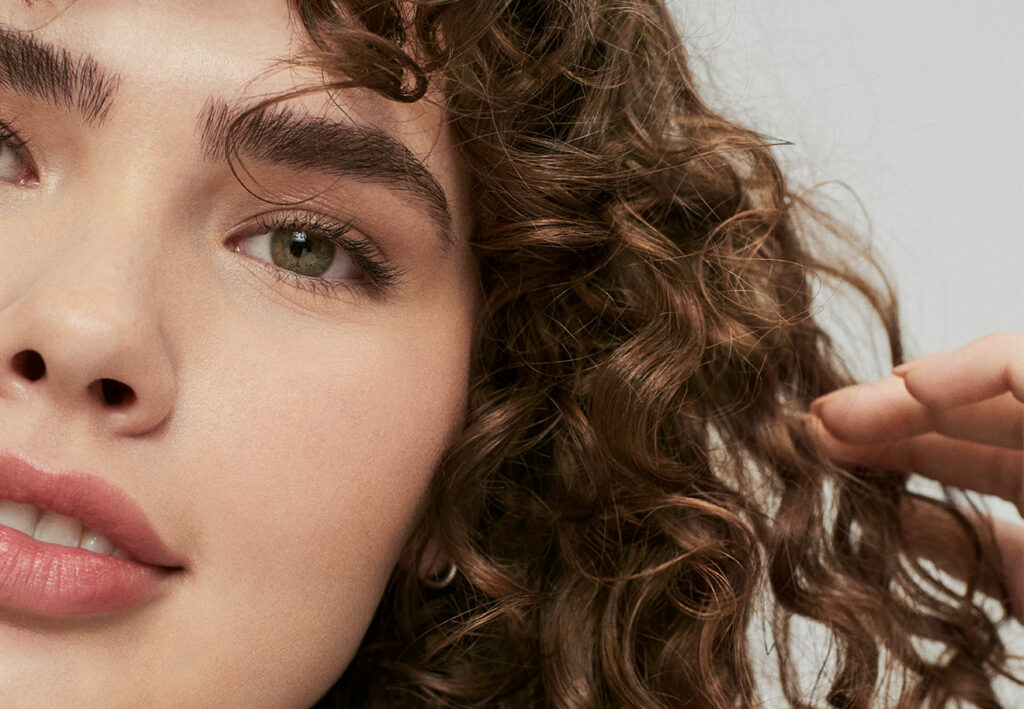Curly hair undoubtedly has a mind of its own. No two curls ride the same wave and while we love them for their strength, power, and the confidence they exude, keeping them in check is no simple task.
With the surprisingly high number of tips and tricks that exist for curly hair, we’re surprised that there’s no clear handbook. As much as we love our curly hair, for some reason, it just doesn’t always love us back. Curly hair may be on our shoulders, but we all know it thinks for itself. Compiling all the information from blogs, reviews, YouTubes, salon chat, and the deepest corners of the Internet isn’t exactly a simple task.
Even though they sometimes give us a hard time, we love our curls. Curly-hair ladies of the world know best that there is no one-size-fits-all for hair care. Curly hair is in a league of its own. So, we’ve put together a complete guide for how to take care of curly hair. Someone had to.
Curly Hair Characteristics
Curly hair can sometimes feel like a whole other language that we have to learn, decode, and follow. With all of its bounce, volume, and liveliness, we should have known it also comes with its own unique set of rules and requirements. But hey, high maintenance never looked so good. And it doesn’t even have to be high maintenance. Once you figure out all the information, and master some little tips and tricks, curly hair won’t seem so complicated anymore.
Prone to dryness
Curly hair is more likely to be dry or frizzy compared to other hair types. Curly hair is more porous than straight hair, making it easier for moisture to escape and more challenging to keep moisture locked in. Don’t worry; we’ve already found the best products that help keep your curls hydrated and happy. Of course, we’ll share our finds, just keep reading.
Fragile
Because of the uneven shape of hair fibers (which creates the curls), the hair shaft will often be in a “wave” shape. This wave shape has highs and lows. The high spots are the areas where the cuticle is slightly lifted. This lift creates tiny breaks in the hair and leaves it susceptible to external factors such as heat damage, UV rays, dehydration, and breakage along the shaft.
For hair that’s so delicate, you wouldn’t be able to tell. Curly hair puts on a strong front; big, bold curls show no weakness, and that’s exactly the attitude we love to see.
Washing Curly Hair
Curly hair is more susceptible to developing that “greasy” look for two reasons; the use of curl-specific products and natural oils staying clumped on the scalp.
The same products that keep your curls looking vibrant and voluminous may also be the culprit for your hair getting greasy more quickly. Curly hair products are thick and creamy, making it easy for product residue to build-up on your hair and scalp. The residual product can leave your scalp looking less than clean and end up weighing down your curls. Use cleansers that are lightweight to deter build-up and sulfate-free to be gentle on the curls.
Because curly hair takes a new direction at every turn of a curl, it can be difficult for your scalp’s natural oils to make their way down the hair shaft. Unlike straight hair, where oils can be brushed right down to the tips, curly hair is likely to develop a build-up of oils near the scalp. Having a greasy scalp may tempt you to wash your hair too frequently. Overwashing can result in further drying out your hair and still not solving the grease problem. We recommend using a sulfate-free shampoo every few days. Use a hydrating agent, like hair oil, for the ends of your hair after showers that aren’t “hair wash” showers.
The bottom line: use lightweight cleansers and wash hair no more than every two days.
Cutting Curly Hair
How often?
Curly hair needs to be trimmed often. More often than other hair types. Because of all the beautiful twists and turns curls take, the hair’s outer layer experiences more wear and tear and becomes vulnerable to breakage. We wish they weren’t, but split ends are rather inevitable for everyone.
Trimming hair frequently will prevent split ends from worsening and creeping their way further up the hair shaft. Unfortunately, there’s no secret formula to prevent split-ends. For now, all we can say is to trim ends frequently to stay on top of damage-control. A good rule of thumb is going in for a trim every 6-8 weeks.
Should hair be wet or dry while it’s being cut?
As far as “hair talk” goes, this question is somewhat controversial. Generally, curly hair should be cut while it’s dry.
When hair is dry, it’s easier to recognize the curls’ spring factor. If the hair is wet, it will need to be stretched down to be cut. It will be difficult to estimate how much will bounce back when it’s dry, and this makes it way too easy to accidentally overcut. The difference in appearance for hair that is dry vs. wet is much more pronounced with curly hair. Most of the time, we wear our hair dry, not wet; cutting it while it’s in its natural, resting-state style will help give you a better visual for the final look.
Sleeping with Curly Hair
Having a proper nighttime routine and respective curl-care routine is crucial if you want your curls to be intact by the time morning rolls around. There are a few hairstyles that help curls survive the night. These are our favorite three:
The pineapple
The pineapple hairstyle is tried and true and is probably the most popular hairstyle for sleeping. It’s just what it sounds like: a loosely tied ponytail that sits on top of your head and looks just like a pineapple. By placing the ponytail on top of your head, you’re keeping curls out of harm’s way. They’ll be less likely to get squished and squashed as you toss and turn during the night.
Satin bonnet
A satin hair bonnet will reduce any friction on your curls that would occur during the night. A bonnet will deter frizz and prevent hair from becoming damaged. As a bonus, a bonnet keeps any products you’ve applied before bed in place; they’ll stay concentrated on your curls and kept away from soiling your sheets.
Braids
Braids are a great way to keep your hair in place during the night and give them some extra definition for the next day. Sleeping with French braids will give curls the most pop, while regular braids will create a more relaxed look.
Products for Curly Hair
When it comes to products for curly hair, hydration is key.
Leave-in conditioner
A leave-in conditioner is just what curly hair needs: deep and lasting hydration. Because curls in curly hair are constantly moving, hair is likely to have tiny splits in it. A tiny break is all it takes to let your hair’s moisture out. Misting hair with a leave-in conditioner helps lock in moisture under a protective and nourishing barrier. Better yet, leave-in conditioner will also work to smooth flyaways and leave strands soft, polished, and manageable.
Curl cream
A curl cream will define your natural curl patterns and provide a light hold to help keep any hairstyle in place. Think moisture, shine, and 0% stiffness. Curl cream can also be used between washes to revive curls. Dampen your lengths and apply a small amount to individual curls to hydrate and defrizz hair. No need to brush it through; simply scrunch in and air dry or diffuse!
Curly Hair Just Got Easier
Curly hair is awesome and with this complete guide, caring for your curls just got a lot easier. Even with all their crazy qualities and needy requirements, we still love them.
Your curls are wonderfully unique, and they need to be treated accordingly. Care for your curls so they can continue to be their best, bouncy, and beautiful selves.





